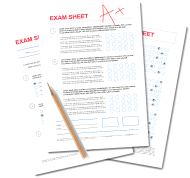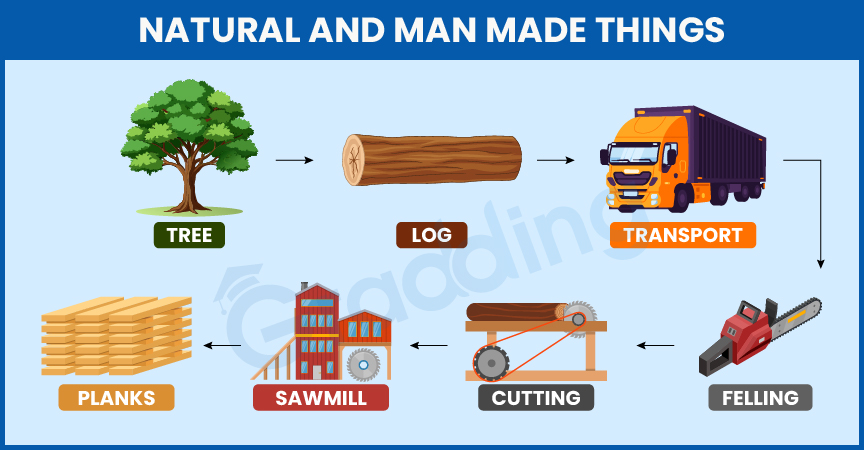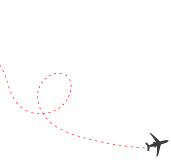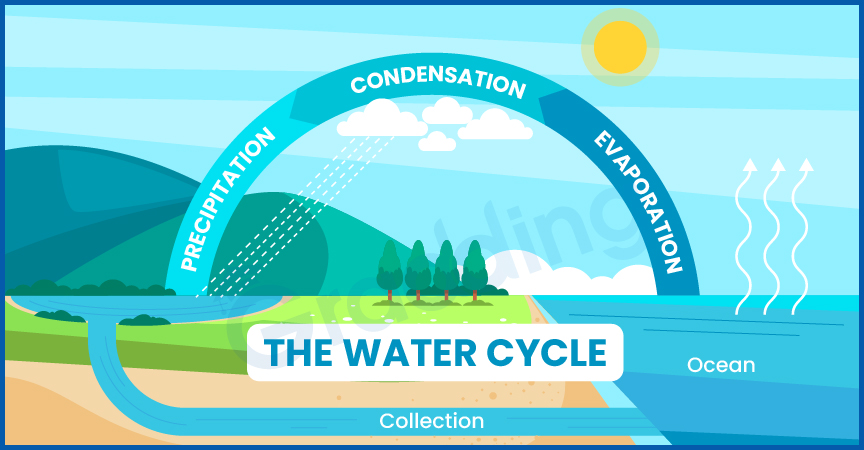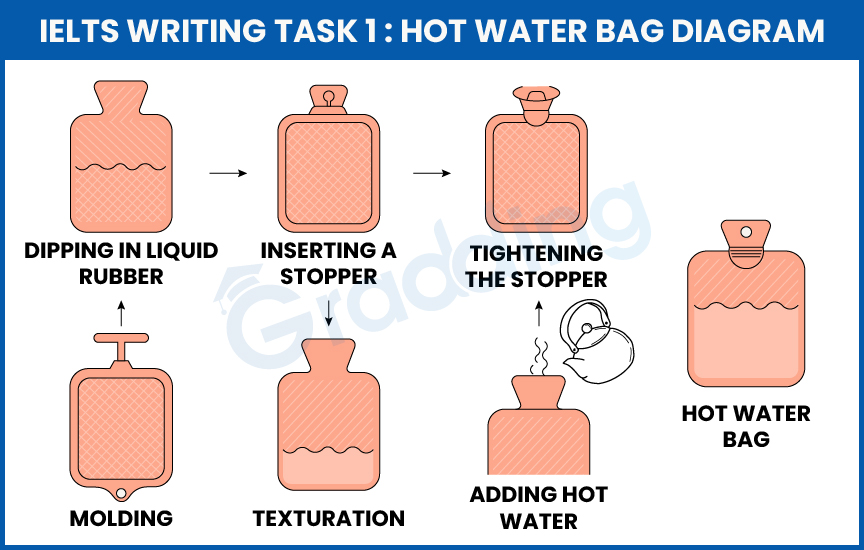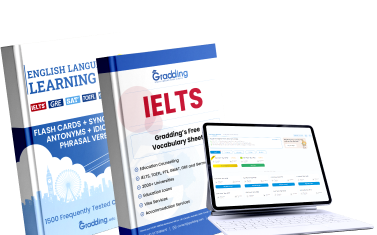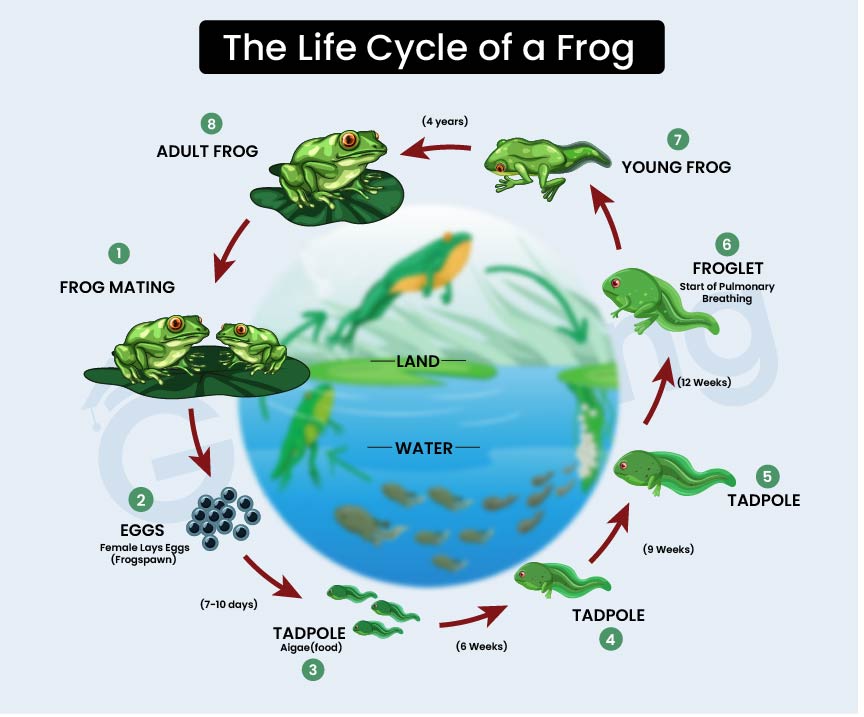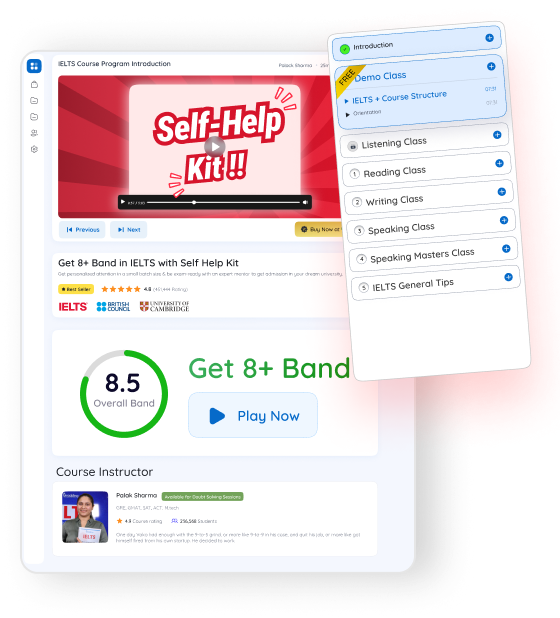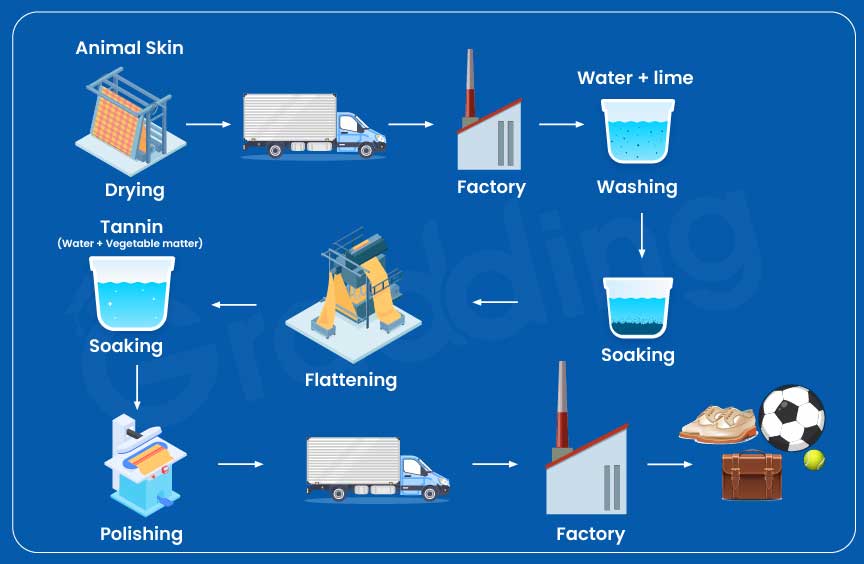In the IELTS writing task 1, a process chart is a visual presentation of a process. The IELTS process chart task 1 is generally a challenging task for many students. A candidate has to show the ability to interpret and describe visual details logically and correctly. Therefore, they find it difficult to attempt. In this blog, we have provided a detailed description of the chart task 1 and a few process writing examples. Also, you can read some tips to solve this type of question. So, keep reading.

Table of Contents
A process chart task 1 is one of the important question types that usually shows a sequence of steps. In this task, you have to describe or summarize a series of steps or stages within a process, which can be either a process or a cycle.
With answering, you have to provide a written report with around 150 words that clearly outlines the main features and stages of the process, in two or three paragraphs. Hopefully, now you are clear about the process chart task 1 meaning.
The IELTS writing task 1 process chart is also known as a process diagram, which is presented in two types. The process diagram can be either natural or man-made. In both types of questions, you have to describe the diagram logically and concisely. Let’s move ahead and understand the format more clearly.
The process task 1, the diagram of a cycle, shows naturally occurring events or cycles. You need to describe each step and connect them. You have to explain how the stages interact. These diagrams may include the water cycle, the butterfly cycle, a natural and man-made things chart, or the carbon cycle.
In the process writing task 1, questions require you to describe a human-made process. These pictures often involve machinery or tools. In this, you will need to explain the steps in the process, how the raw materials are transformed into the final product. For example, cement production, glass manufacturing, and coffee-making process can be included in questions.
Finally, you have a clear view of the IELTS process diagram types.
In the IELTS Academic Writing Task 1, you must know how to observe any diagram and craft a short content. You also require skills to describe all points in a sequence. However, if you practice with several process writing examples, you can craft a good response and get a good band score. In the following details, we have provided you with different types of samples, practice all, and understand the format well.
In the process writing task 1, this is the natural and man-made things chart, which shows the process of how natural materials are used to produce planks. Observe each step clearly and summarize your response within 150 words.
Answer
Here is the first writing task 1 process sample answer with a detailed description.
The diagram explains the process of converting a natural material into wooden planks. In this image, wood from a tree is used in several industries and then undergoes mechanical steps.
The process of making planks starts simply from a natural resource, which is a tree. When the tree reaches maturity, it is felled down and the branches are removed. The trunk is then cut into logs of manageable lengths and transported by truck to the next stage.
At the destination, the logs are transferred from the truck and undergo cutting with a circular saw and then processed at a sawmill. At this place, these logs are refined into a usable shape and turned into planks. These are man-made products created from a natural resource.
Overall, this diagram shows a clear transition from a natural item to a human-processed product, which is wooden planks. It describes a mechanical sequence like felling, transporting, cutting, and refining the raw material for a final use.
The second example of writing task 1 process chart is for the water cycle diagram, which shows the stages of the water cycle. Identify the steps in sequence and frame the response.
Answer
Here is the second IELTS writing task 1 process sample answer with proper format.
This diagram shows the natural process of the water cycle, which involves the regular movement of water within the Earth and atmosphere through different steps. These are evaporation, condensation, precipitation, and collection.
The water cycle starts in the diagram when the sunlight heats the seawater, causing it to evaporate into a gaseous state called water vapor. As the water vapor rises into the atmosphere, it cools and condenses. After this, it forms into tiny water droplets that gather together to form clouds.
When the clouds become heavy and saturated, they release the water back to the Earth's surface in the form of precipitation, which is typically rain or snow, depending on the temperature. Then the droplets fall to the ground, where they either get absorbed into the soil or flow back into the water bodies through streets or surface runoff, completing the cycle.
Other precipitation falls on the land where it can infiltrate into the ground, become groundwater, or flow into the lakes and rivers.
Eventually, it gets back to the ocean and continues the water cycle. This is how the diagram demonstrates the natural renewable process, which is crucial for life.
This IELTS writing task 1 process diagram illustrates the process of manufacturing and using a hot water bag. Observe the steps and write the response.
Answer
Read the answer for the hot water diagram and understand the intent.
The diagram describes different types of processes which is involved in the production and usage of a hot water bag. It begins with its molding and ends with the final use.
In the first step, the base material is molded into the desired shape of the bag. After this, the bag is then dipped into a liquid in rubber to form its flexible and heat-retaining outer layer. This process continues when the material undergoes a texturing process to add grip and durability to the surface.
Then a stopper is inserted into the neck of the bag to prepare it for use. After this, hot water is poured carefully through cattle or something into the bag. This is a very important step for ensuring that the product fulfills its purpose of heat application because the user needs to tighten the stopper so that the hot water can remain inside securely.
The hot water bag is now ready for use.
Overall, this process chart task shows a straightforward process of making a hot water bag. The process from molded material to a fully functional hot water bag involves both industrial as well as user-driven stages.
In this section, you will find writing task 1 process sample answer on the life cycle of a frog. Refer to the image and the answer below.
Answer
The above given process chart demonstrates the life cycle of a frog.
The frog passes through eight stages of life to become a full-grown frog. It starts with adult frogs mating and eggs being laid in water. In the next stage, the tadpole emerges from these eggs and passes through three stages. In the first stage, they become a froglet, followed by a young frog, and finally an adult frog, restarting the life cycle.
In the beginning, an adult frog mates and the female lays eggs in the water. These are called frogspawn. After seven to ten days, tadpoles emerge from these eggs, which can swim and get their nutrition from eating algae. In the next six weeks, the tadpole grows and its legs develop. This development continues forming the front legs in the next nine weeks.
Twelve weeks later, it becomes a froglet resembling a small frog. It has a tail but is shorter than the tadpole. At this stage, their pulmonary breathing system is developed, enabling them to breathe in water and on land. It becomes a young frog from a froglet with time. Eventually, after four years, it is an adult frog ready to repeat its life cycle.
Here you will get writing task 1 process sample answer 2 on the leather process.
Answer
The diagram in the question illustrates how leather products are made for retail. The representation suggests that it is a completely man-made process consisting of three main steps. The process starts with the transportation of raw materials to the factory, and then the material is processed and prepared. After that, the final products are ready.
In the first step, the leather skins of various animals are dried. After that, they are taken to an industry by truck for washing in lime and water. In the next step, these skins are soaked in lime for a longer period before they are run through a machine with large rollers. These rollers flatten the skins.
Now, the skin is soaked in tannin, which is made from water and vegetable matter, followed by polishing with another roller. The products are in an intermediate stage, ready to be transported to another factory for crafting the final product.
India’s #1 IELTS online preparation courses from experts to get dream band score in your first attempt.
Enroll nowIn the upcoming section, the third writing task 1 process sample answer is given. Refer to the image and read below.
Answer
The diagram depicts the recycling process of waste glass bottles.
It has three main stages. These are waste glass bottle collection, plant recycling, and new product delivery.
The process is initiated by collecting the waste glass bottles at a point and then transporting them via trucks to a recycling centre (cleaning plant). The bottles then undergo a thorough cleaning process at the plant using high-pressure water to remove dust and other contaminants. After this, they are sorted into three categories based on colour: brown, green, and clear.
Following the cleaning and sorting process, the sorted bottles are transported to a glass factory. Here, they are crushed into smaller pieces and heated in a furnace at temperatures ranging from 600°C to 800°C, transforming them into molten glass. This recycled molten glass, combined with new liquid glass, is then used to create new bottles.
Once the new bottles are formed, they are ready to be filled with beverages, marking the successful completion of the glass recycling process. The process concludes when these filled bottles are placed in supermarkets, ready for sale and reuse.
We have explained the six writing task 1 process sample answers and their diagrams. Hopefully, you have understood the pattern of answering carefully.
In the process diagram IELTS questions, a structured approach is crucial. If you know the right strategy, you can easily frame the answer with a proper format. Therefore, here we have provided some tips to tackle the process diagram questions during the actual test.
To conclude, we have discussed the process chart task 1 in this blog. You have a clear view of the types of questions in this task and examples with detailed explanations. We have also given tips to help you so you can tackle this task during the actual test and get a good band score. Apart from this, if you want to prepare for another task in the writing section, you must know the IELTS syllabus and the IELTS exam pattern. Without complete information, you cannot score well, so learn everything and prepare accordingly.
1. What Is the IELTS Process Wt1?
In the IELTS Academic, writing task 1 (WT1) is a question type where you have to describe and summarize visual information, such as graphs, charts, or diagrams, concisely and accurately. In this task, you need to select key features, describe and compare data, and write at least 150 words appropriately within 20 minutes.
2. What Are the Types of Charts in Task 1?
In writing task 1, there will be different types of charts and graphs, including bar charts, line graphs, pie charts, tables, process diagrams, maps, and combinations of these.
3. How to Write a Process Task 1?
Here is the procedure for writing a process task 1 in the IELTS exam:
4. How to Get Band 9 in IELTS Writing Task 1?
Here are the simple steps to get a good band score in IELTS writing task 1 -
5. Do We Need to Write a Conclusion in Writing Task 1?
No, it's not necessary to include a conclusion in IELTS Writing Task 1 (Academic). But you should focus on providing a clear and concise overview of the visual information, for example, a graph, a chart, diagram presented in the task. This overview summarizes the main trends and key features in a single paragraph, and it's crucial for achieving a good band score.

We are available in :
BangaloreAhmedabadJaipurHyderabadKeralaPuneChandigarhMumbaiGurgaonChennaiKolkataTrivandrumNoidaKochiCalicutKottayamKollamThrissurIndoreUdaipurdisclaimer:logos and other registered trademarks of universities used on this platform are held by their respective owners. Gradding does not claim ownership or association on them, and their use is purely for informational and illustrative purposes.

 Take Writing Mock Test Now!
Take Writing Mock Test Now! 